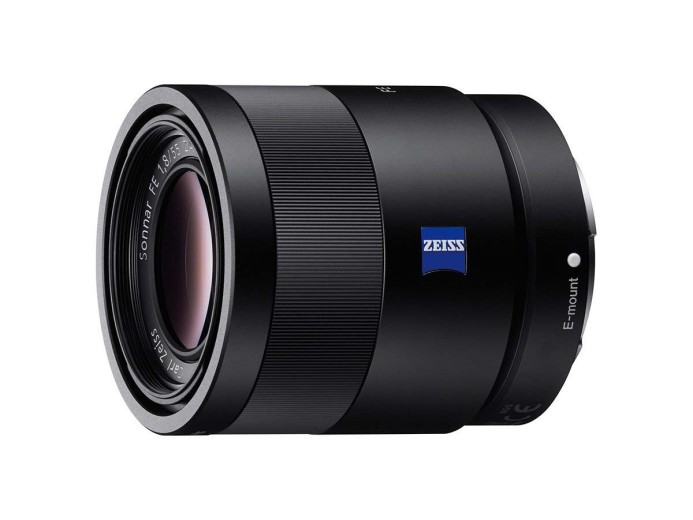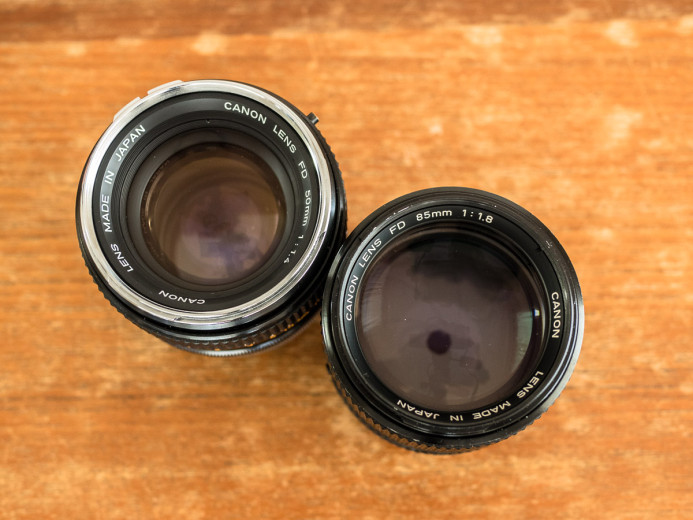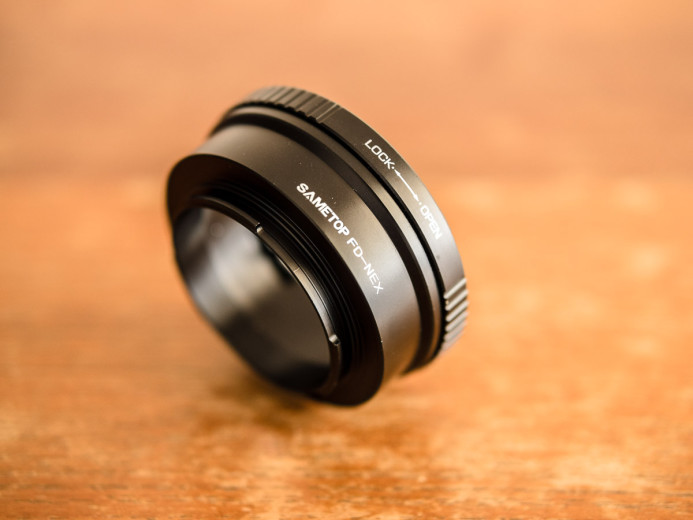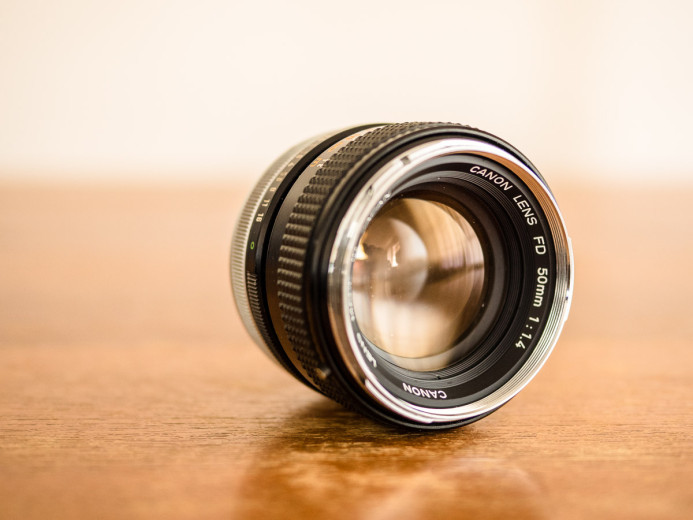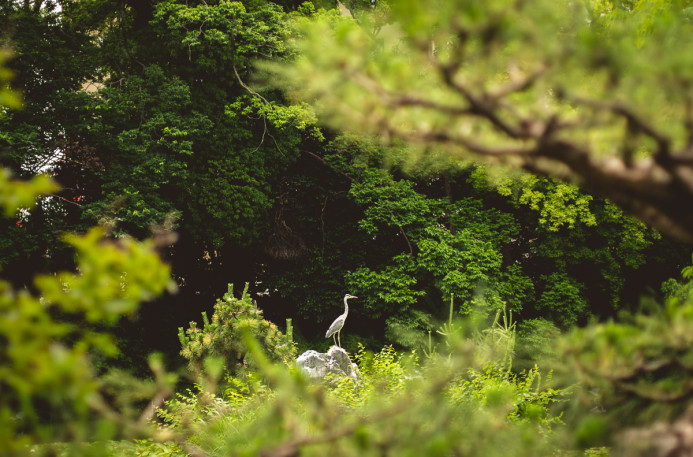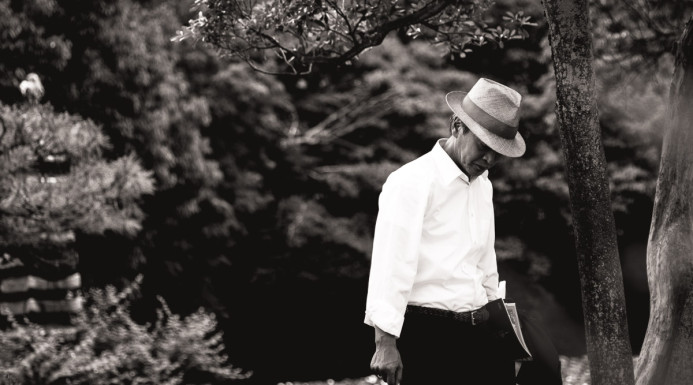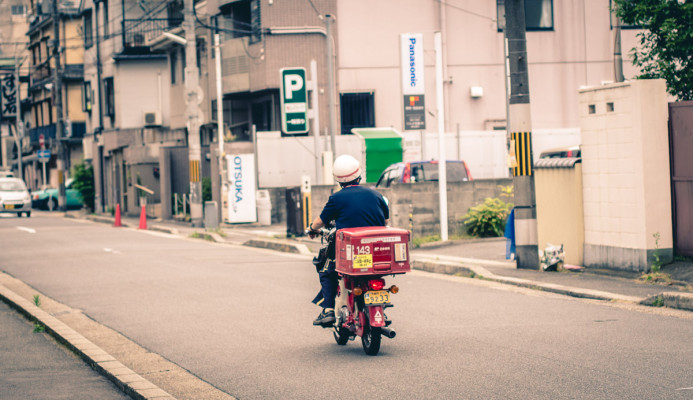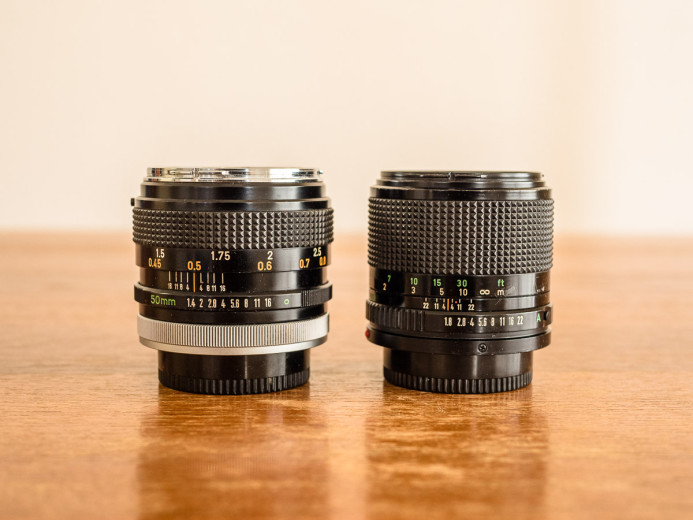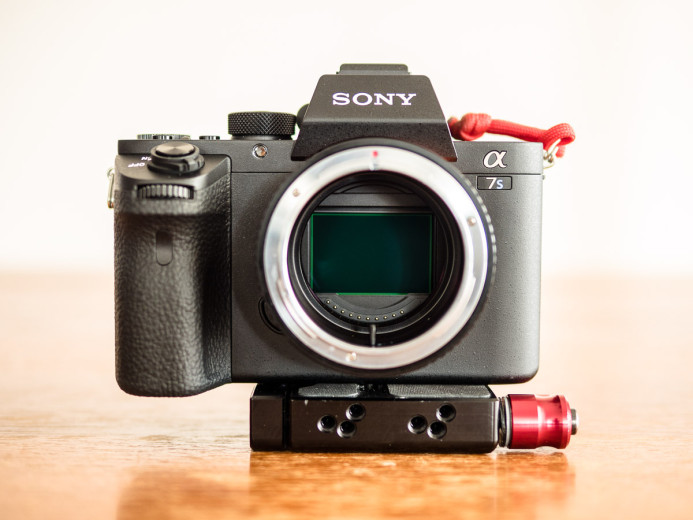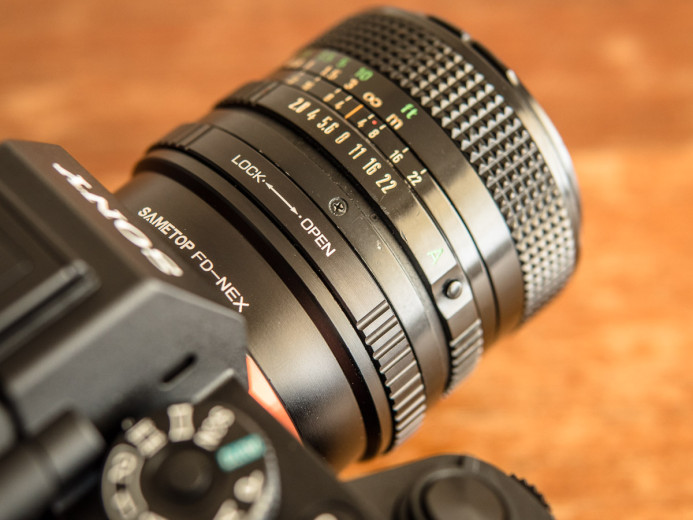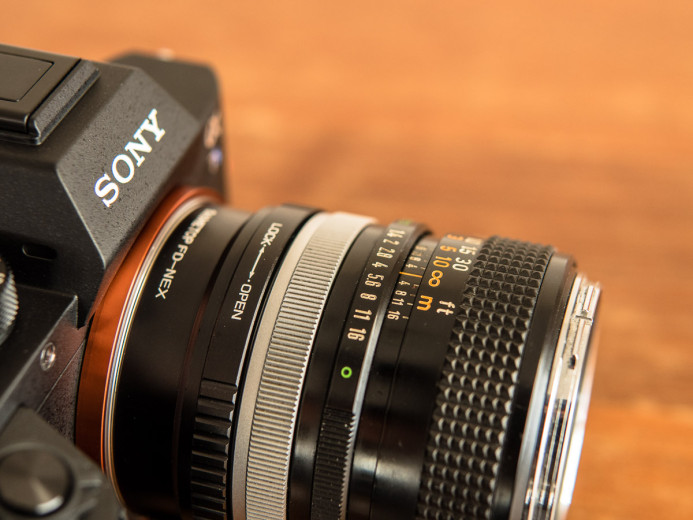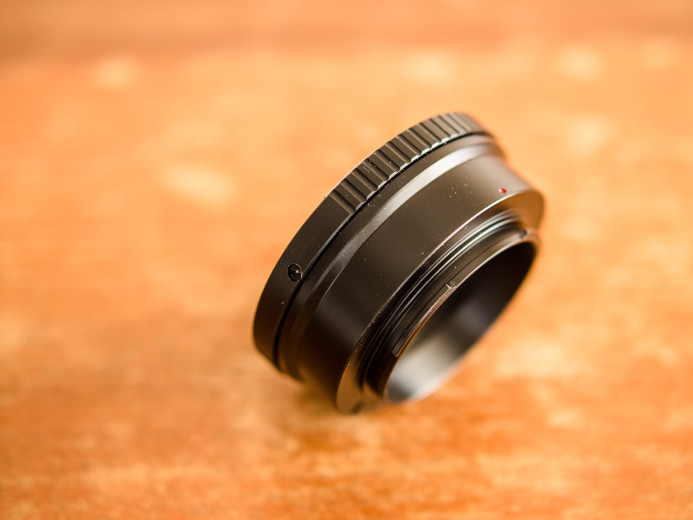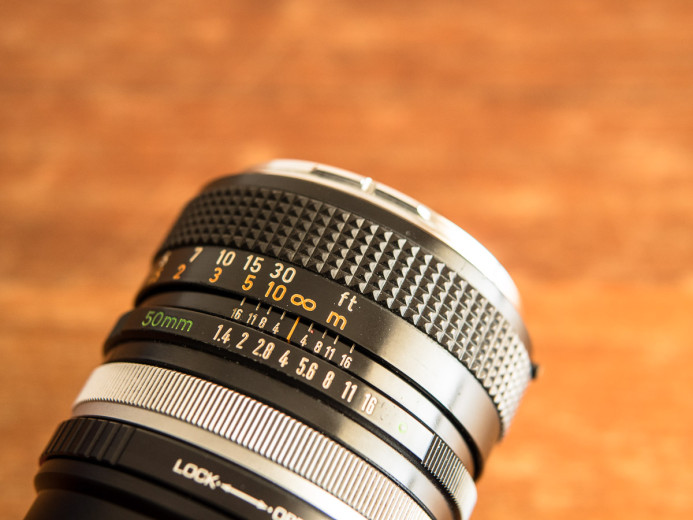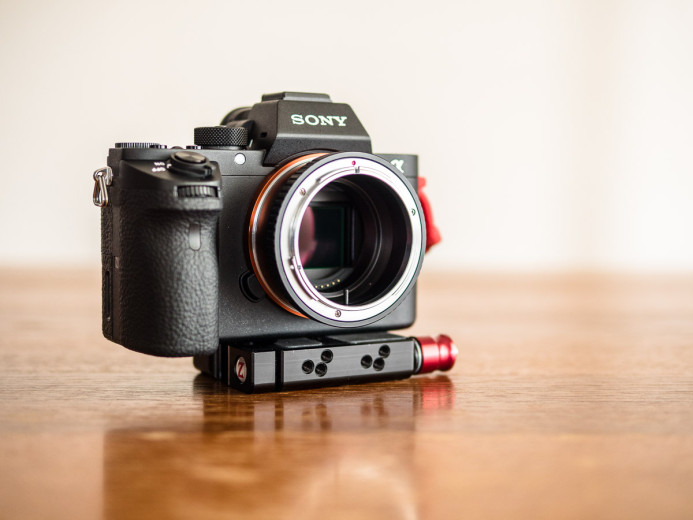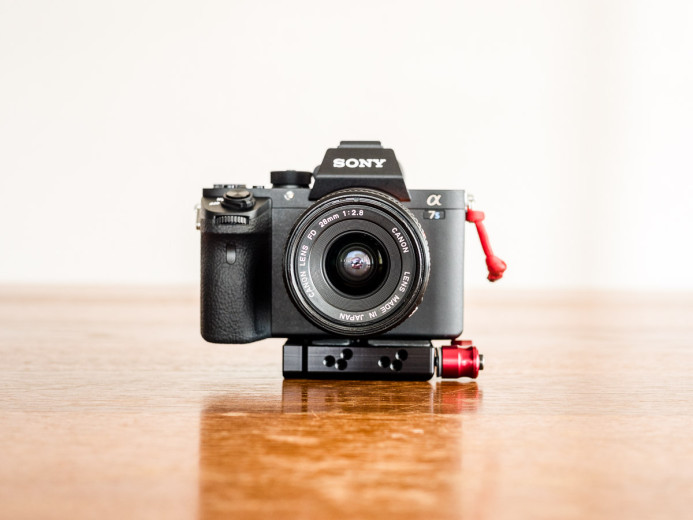Build a Set of Affordable Full-Frame Lenses for the Sony a7S II with this $13 Adapter
Awesome glass at an affordable price is not just a fantasy.
At $3K, the Sony a7S II is not a cheap camera. On top of that, your selection of native full-frame is rather limited and all cost a pretty penny. For example, Sony’s 55mm f/1.8 prime lens costs nearly $1,000.
Thrifty Fifty? Not really.
Instead of dropping a cool grand on a single lens, you could pick up an adapter for your existing lenses at a fraction of the cost. This is the power of a highly-adaptable camera like the a7S II– buy your lenses once and use them on your current and future cameras with the aid of a simple adapter.
If you don’t have any existing lenses, you can still build a solid set of lenses for video production without even approaching the cost of a single native lens from Sony by picking up some vintage Canon FD lenses and an adapter.
You can get lens adapters are for virtually any lens mount, but finding an affordable adapter that also performs well can prove to be difficult. Cheap adapters are plentiful, but they’re frequently more trouble than they’re worth due to poor build quality or a lack of quality control.
I tested several budget-friendly E-Mount adapters for Canon FD lenses, and for only about $13, I was happy to discover that Sametop’s Canon FD to NEX adapter provides a very solid way to shoot with Canon FD lenses on E-mount cameras like the Sony a7S II.
Just the Stats Ma’am
- Adapter type: Passive (no electronics)
- Lens mount: Canon FD
- Camera mount: NEX/E-Mount (Sony a7S II, Sony a7R II, etc.)
- Frame Size: Full-frame, APS-C
- Aperture Control: Manual (Clickless ring)
- Focus: Manual
- Weight: 84g
- Warranty: 24 months (30 day money-back guarantee)
- Price: $12.99
Canon…FD?
You may be familiar with Canon’s modern EF-mount lenses, but Canon’s older FD-mount lenses are definitely worth a look as well. The FD mount was Canon’s standard lens mount for nearly 20 years until it was replaced by the EF mount in 1987.
Optically, FD lenses were awesome, but the EF-mount was the way forward for Canon, offering modern amenities such as autofocus, in-camera aperture control, and image stabilization. As such, FD lenses became “legacy lenses”– defunct and abandoned– left to collect dust in closets as their optical prowess faded from memory.
Until now.
Thanks to the short flange distance of Sony’s E-mount, mirrorless cameras like the a7S II can use virtually any lens– including FD lenses– with the aid of a simple adapter.
FD lenses are a great option for E-mount shooters for several reasons:
- Awesome image quality — FD lenses render a nice organic image, delivering good definition without appearing clinical or overly-sharpened like some modern lenses.
- Full-Frame — Canon FD lenses were designed for full-size 35mm film coverage, so you don’t have to worry about vignetting on the a7S II’s full-frame sensor.
- Affordable — As shooters migrated to the EF-mount, they no longer had any use for their FD lenses, meaning many used lenses can now be had for well under $100 a pop.
- Highly adaptable — A large flange distance allows Canon FD-mount lenses to be adapted to a wide variety of cameras, from the Sony a7S II to the ARRI ALEXA and the RED Dragon.
- Wide Selection — Canon FD lenses were produced for over 20 years, giving you an extensive catalog of lenses to choose from.
For example, my first (and still my favorite) Canon FD lens was the lovely FD 50mm f/1.4 “Chrome Nose” prime lens from 1971. This lens is built like a tank and a dream to shoot with at f/2. It’s sharp, yet still delivers a nice shallow depth of field to isolate your subject from the background.
Even better, it only cost me $30.
I’ve shot stills and video all around the world, often armed with just this 50mm lens.
Of course, FD lenses are fully manual, meaning they don’t offer modern features such as autofocus. However, manual focus is recommended when shooting video anyway, so it’s not something you’ll miss in most situations. In fact, FD lenses often have much smoother focus rings than modern EF lenses, giving them the edge for pulling focus.
Another thing to keep in mind is that there is a sweet spot for FD lenses. There have been many advances in optical design since production of FD lenses ended, so not all FD lenses are winners. Prime lenses between 24mm and 100mm are where FD lenses really shine. This is the range where you’ll find some awesome glass with nice wide apertures that deliver a cinematic image.
Note: A list of recommended Canon FD lenses is included at the end of this post to help you get started.
Bottom line: Canon FD lenses allow you to build a set of fast prime lenses at an affordable price.
Lens Compatibility
Sametop’s FD adapter is compatible with Canon FD and FL lenses. Both breech lock and bayonet mount lenses are supported by this adapter.
While some adapters are only designed for cameras with smaller APS-C sensors, Sametop’s FD adapter is fully compatible with Sony’s full-frame cameras such as the a7S II and a7R II. I tested higher-priced “full-frame” adapters from other manufacturers and Sametop’s adapter performed just as well, if not better than those adapters.
Bottom line: Sametop’s FD adapter gives you access to the full library of Canon FD/FL lenses and is compatible cameras with both full-frame and APS-C sensors.
P is for Passive
As previously-mentioned, Canon FD lenses are fully manual– you won’t find any autofocus, image stabilization, or any other functionality that requires communication with the camera on these lenses.
As such, Sametop’s adapter is a straightforward passive adapter with no electronic connections of any kind.
Aside from a clickless ring that allows you to smoothly open and close the lens’ aperture, Sametop’s adapter has no moving parts. Its simplicity means this adapter should be relatively trouble-free.
Bottom line: Sametop’s FD adapter is passive as FD lenses do not require an electronic connection to the camera.
Build Quality
One of the first things you notice right out of the box is that Sametop’s Canon FD adapter feels pretty solid. Weighing in at 84g, the adapter is not heavy, but it doesn’t feel fragile either.
Fit and finish is good as well. Thanks to having only a few moving parts, there really isn’t anything on the adapter that is loose or rattles.
Additionally, the adapter is made completely out of metal with no plastic parts. Everything but the lens mount is anodized with a smooth black finish that resists scratches well.
Bottom line: The build quality of Sametop’s FD adapter is surprisingly good, rivaling adapters that cost many times more.
Mounting
Sametop’s Canon FD adapter has about 1mm of play each on both lens-side and camera-side, which is common even when shooting with native lenses. Older FD and FL lenses with breech lock mounts have zero play thanks to their friction ring.
You have to apply a decent amount of torque on the adapter to shift it, so the amount of play has not presented many issues in actual shooting, though there may be some shifting with very lightweight lenses. However, rotating the focus ring on most lenses requires less force than it takes to shift the adapter, so it’s unlikely that the play will be noticeable in most situations.
Bottom line: The adapter mounts snugly and has about the same amount of play as a native lens. You should not notice it unless you really twist the lens mounted on this adapter.
Infinity Focus
Lens tolerances are incredibly tight and it’s not uncommon for a cheap adapter to fudge the numbers a little bit, which can throw off things like infinity focus. This is why I was surprised to find that Sametop’s FD adapter absolutely nails infinity focus.
There are a lot of different FD lenses out there, so you’re mileage may vary, but all of the lenses I tested hit infinity focus perfectly with this adapter.
Many adapters– especially adapters for vintage lenses– are designed to focus just beyond infinity to ensure that all lenses will reach infinity focus. This improves the adapter’s lens compatibility, but it also means that your lens’ focus markings may not be accurate throughout the entire focal range. It’s nice to see this is not a problem with Sametop’s FD adapter.
Bottom line: All lenses tested with Sametop’s FD adapter hit infinity focus perfectly.
Setup
Using this adapter and your FD lenses with an E-mount camera is pretty straightforward:
- Mount the adapter on the camera.
- Mount a lens on the adapter.
- Shoot.
However, since the camera doesn’t have any electronic connection to the lens when using passive adapters like this one, it has no way of knowing whether there’s actually anything attached to the camera. As a result, you need to tell the camera that it’s okay to shoot without a lens attached to avoid error messages when shooting stills or recording video.
For example, on the Sony a7S II, you need to set Custom Settings (4) / Release w/o Lens to Enable when using this adapter.
Bottom line: Shooting with this adapter is as easy as pie. Just make sure you disable lens detection on your camera to avoid any error messages.
Like a Full Set of Lenses for Only $13
One of the best thing about shooting with adapted lenses is that you can continue using your existing lenses on a new camera just by picking up an adapter. This means you don’t have to invest in a completely new set of lenses for the camera; you can start shooting right away using lenses that you’re already familiar with.
The cherry on top is that a solid adapter like Sametop’s Canon FD/E-mount adapter allows you to start shooting with inexpensive FD lenses for only $13. This adapter is solid, well-built, and performs well. Plus, at this price, you don’t need to go all-in on FD lenses– this adapter is affordable enough to pick up even if you just have one FD lens.
Is Canon FD the only mount you should use to build a set of lenses for the a7S II? Not by a long shot– FD lenses are a great value, but there are several other legacy and modern lenses you have access to with the a7S II’s versatile lens mount such as Nikon, M42, and even Canon EF.
We’ll be covering adapters for other lens mounts in upcoming guides, so sign up for free updates below to be notified when they are released.
Recommended Canon FD Lenses
Here is a short list of some recommended FD lenses to use with the Sony a7S II (or any other E-mount cameras) and Sametop’s FD adapter:
- Canon FD 50mm f/1.4 (eBay) — A versatile focal length for full-frame cameras like the Sony a7S II. It’s a bit soft wide open, but cleans up beautifully at f/2.
- Canon FD 24mm f/2 (eBay) — A fast and wide prime, ideal for landscapes or shooting on a stabilizer like a Glidecam or a 3-axis gimbal.
- Canon FD 28mm f/2.8 (eBay) — Not the sharpest lens wide open, but more affordable than the 24mm f/2. When stopped down, this is a nice lightweight wide-angle lens for shooting on a Glidecam or a 3-axis gimbal.
- Canon FD 85mm f/1.8 (eBay) — A medium-tele lens with a nice wide aperture makes this a beautiful portrait lens.
Pro Tip: When buying vintage lenses, be careful to avoid lenses with the following issues:
- Scratches
- Haze
- Oil on the aperture blades
- Fungus
Note: Dust is almost unavoidable in older lenses, but it generally will not affect image quality unless there is an abnormally high amount of dust in the lens.
